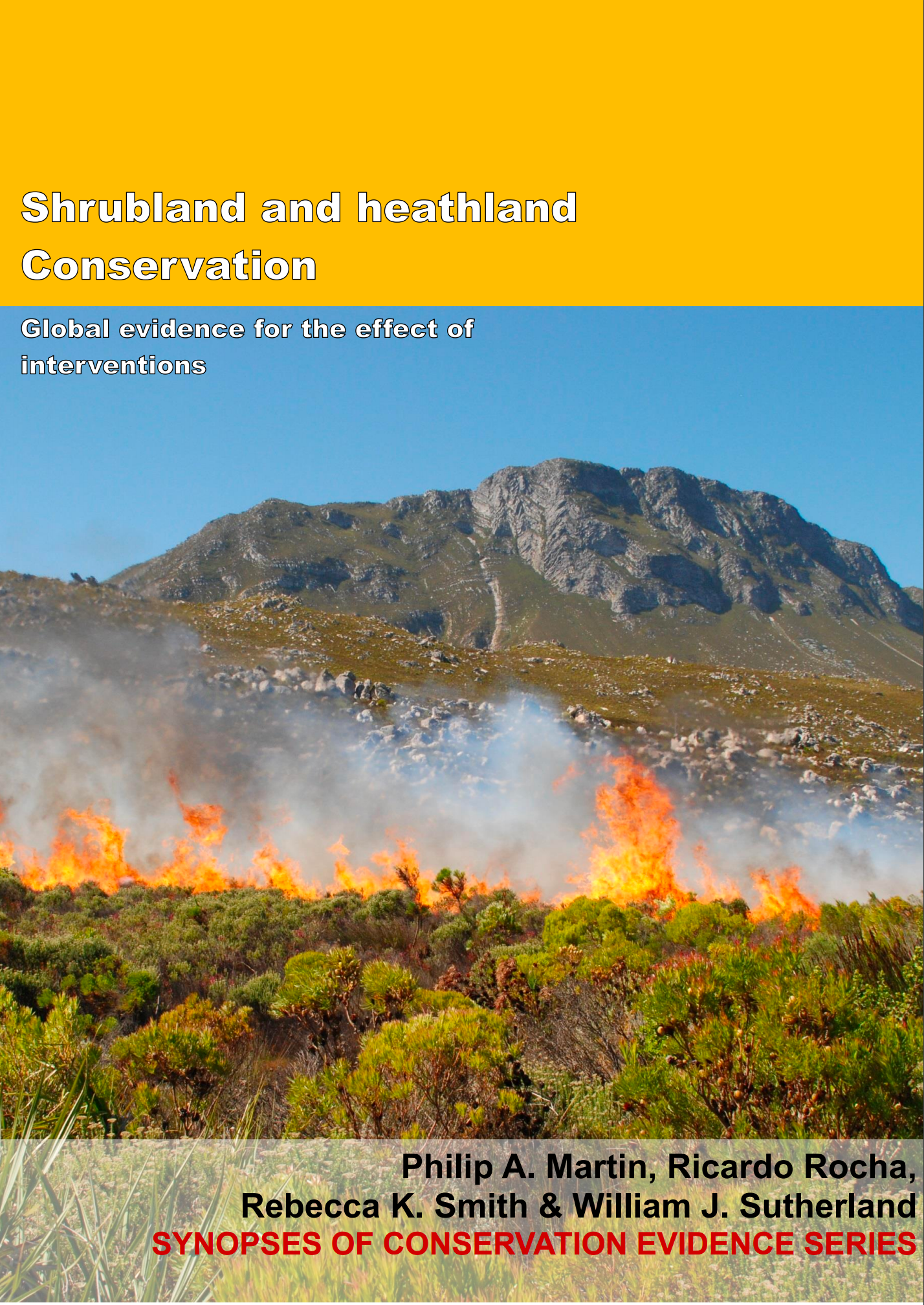Change type of livestock
-
Overall effectiveness category Unknown effectiveness (limited evidence)
-
Number of studies: 3
View assessment score
Hide assessment score
How is the evidence assessed?
-
Effectiveness
40% -
Certainty
29% -
Harms
5%
Study locations
Supporting evidence from individual studies
A controlled study in 2001–2003 in a heathland affected by burning in northern Spain (Jauregui et al. 2007) found that grazing with sheep instead of goats led to an increase in the cover of gorse Ulex europeaus and lower cover of herbaceous plants, but to no difference in the cover of heather Calluna vulgaris or in total plant biomass. After two years, gorse cover in plots grazed by sheep (27% cover) was higher than that in plots grazed by goats (14% cover). Cover of herbaceous plants was lower in areas grazed by sheep (27% cover) than those grazed by goats (42% cover). However, heather cover did not differ from between areas grazed by sheep (1% cover) and areas grazed by goats (1% cover). Plant biomass also did not differ significantly between areas grazed by sheep (10 tonnes/ha) and areas grazed by goats (9 tonnes/ha). In 2001 eight 0.3 ha plots were established with Gallega sheep, and eight plots with Cashmere goats. Stocking rate was approximately 10 animals/ha. Plant cover was recorded every year in 2001–2003 using point quadrats placed along six 13-metre-long transects in each plot. The vegetation in five randomly placed 0.2 m2 quadrats was harvested and dried for biomass estimation.
Study and other actions testedA replicated, randomized, before-and-after trial between 2002 and 2006 in a heathland in northern Spain (Celaya et al. 2010) found that plots grazed by cashmere goats had higher cover of dwarf heather species but lower herbaceous species cover and number of plant species than those grazed by celtiberic goats. After four years, cover of dwarf heather species was higher in plots grazed by cashmere goats (32%) than in plots grazed by celtiberic goats (15%). However, cover of herbaceous species was lower in plots grazed by cashmere goats (cashmere: 30%; celtiberic: 47%), as was the number of plant species (cashmere: 23 species/plot; celtiberic: 26 species/plot). There were no significant differences in plant height (17 cm vs 13 cm), or western gorse Ulex galli cover (8% vs 11%) between plots grazed by cashmere or celtiberic goats. In 2002, six 0.6 ha heathland plots were fenced. Each plot was randomly allocated to be stocked with celtiberic goats (12 goats/ha) or a cashmere goats (15 goats/ha). In each plot 100 random points were used to survey vegetation cover. Plant height was measured using a sward stick every 10 cm along a 50 m transect in each plot.
Study and other actions testedA replicated, controlled, before-and-after study in 2001-2006 in degraded wet heath in Northumberland, UK (Critchley et al. 2008) found that grazing with both cattle and sheep, as opposed to just grazing with sheep, reduced purple moor grass Molinia caerulea cover, had mixed effects on cover of common heather Calluna vulgaris, and had no effect on the cover of four other plant species. Cover of Molinia caerulea declined after the introduction of cattle into areas grazed by sheep (before: 12-13%, after: 15-19%), but increased in areas that were only grazed by sheep (before: 29-13%, after: 20-19%). Common heather cover declined in one of two areas grazed by sheep and cattle (before: 20%, after: 13%), but one of two areas saw no significant change over time (before: 14%, after 12%). Common heather cover declined in areas grazed by only sheep (before: 12-21%, after: 8-18%). The cover of common sedge Carex nigra, rush species Juncus spp., hare's-tail cottongrass Eriophorum vaginatum, and mat grass Nardus stricta did not change significantly over time in areas that were grazed by sheep and cows (before: 2-11%, after: 3-14%). The heathland was split into four areas by fencing, two of which were stocked with both sheep and cattle, and two of which were stocked only with sheep. The entire area was grazed by sheep from 1995 and cows were introduced in 2003. Vegetation cover was recorded in one hundred and ninety six 1 m2 quadrats in July–August 2001, and 2003-2006.
Study and other actions tested
Where has this evidence come from?
List of journals searched by synopsis
All the journals searched for all synopses
This Action forms part of the Action Synopsis:
Shrubland and Heathland Conservation
Shrubland and Heathland Conservation - Published 2017
Shrubland and Heathland synopsis





)_2023.JPG)














